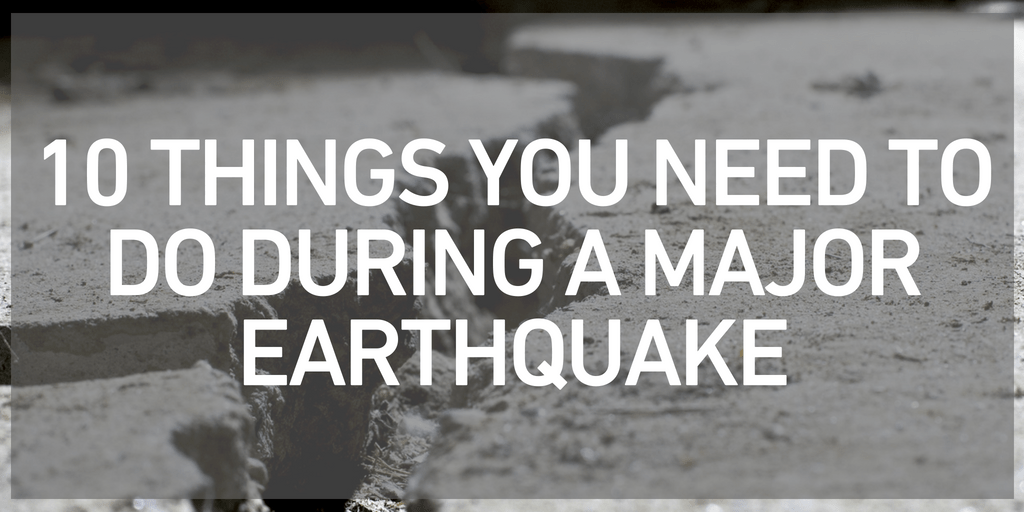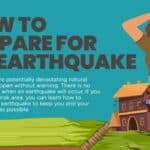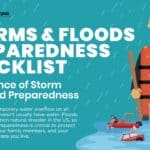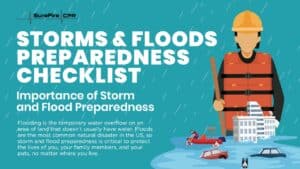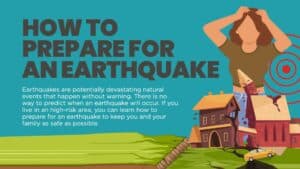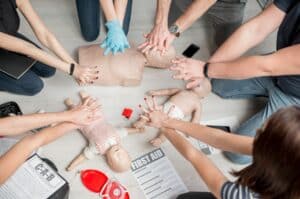Earthquakes are virtually impossible to predict. They can occur at any time of year and without warning. Meanwhile, individuals in all 50 states are at risk of earthquakes, and a major earthquake’s impact may be felt for hours, days or even months. Worst of all, for those who do not prepare for earthquakes, the consequences can be dire.
Ultimately, earthquake preparedness is essential, particularly for southern California residents. Southern California is more prone to earthquakes than many other parts of the United States. In fact, southern California experiences about 10,000 earthquakes annually, according to the U.S. Geological Survey. Most of southern California’s earthquakes are so small that people don’t feel their impact. But hundreds of southern California earthquakes each year have a magnitude of 3.0 or higher. And if a major earthquake occurs, its aftershock will produce many more earthquakes of all magnitudes for several months to follow.
When the ground starts trembling beneath you, do you know what to do next? If you answer “No,” don’t stress – we’re here to teach you how to survive a major earthquake.
Now, let’s take a look at 10 things you need to do during an earthquake.
- Remain Calm
Research indicates most people won’t panic in an earthquake. Instead, individuals are more likely to take a proactive approach and find ways to help others than panic in an earthquake.
If you stay calm during an earthquake, others may be more inclined than ever before to do the same. As a result, you can work with family members, friends, and others during an earthquake to help everyone involved stay safe.
- Know Where to Go
If you’re indoors during an earthquake, stay indoors. You should stand against a wall near the center of the building or crawl under heavy furnitures like a desk or table. Also, try to avoid windows and outside doors.
On the other hand, if you’re outdoors when an earthquake happens, stay outdoors. Avoid power lines or anything that might fall, and stay away from buildings, as stuff might fall off a building or a building itself could fall on you.
Additionally, if you’re in a car when an earthquake strikes, stop the car, but not near or under buildings, trees, overpasses or utility wires. When the car is stopped, you should stay in it until shaking from the earthquake stops.
- Drop to the Ground
Don’t let an earthquake knock you to the ground. Conversely, at the first sign of an earthquake, drop to the ground and get on your hands and knees. This technique can be performed inside or outside and helps reduce the risk of injury. Plus, the position ensures you can stay low to the ground and crawl to shelter as needed.
- Cover Your Head and Neck
Cover your head and neck with one hand. If you’re indoors, crawl underneath a table or next to an interior wall away from windows to shelter in place. If you’re outdoors, stay on your knees and bend over to protect your vital organs.
- Hold On
Hold on until the trembling from an earthquake stops. If you’re under a table or any other type of shelter, hold the shelter in place with one hand and be ready to move with it if it shifts position. If you’re without shelter, hold on to your head and neck with both arms and hands.
- Stay Where You Are
Studies show most injuries occur during earthquakes when people inside buildings attempt to move to a different location or try to leave. If you move during an earthquake, you may put yourself or others in danger. Thus, once you reach a safe location, stay there until the shaking from the earthquake ends. And remember, most earthquakes last less than a minute, so you probably won’t have to stay in this location for too long.
- Do Not Run Outdoors
Do not attempt to run outdoors to exit a building during an earthquake, as you may not be able to remain standing due to the earthquake’s tremors. By running outdoors, you put yourself at risk of injury or death due to falling objects from buildings too.
- Avoid Doorways
Doorways do not provide protection against falling or flying objects. Therefore, if you’re indoors, try to avoid doorways at all costs.
- Stay Away from Elevators
There is no telling when an elevator might stop working, especially during an earthquake. If you’re in a building with an elevator, don’t use the elevator.
- Cover Your Mouth
If you are trapped under debris in an earthquake, cover your mouth with clothing or a handkerchief if possible. Do not light a match, move around or kick up any dust. If there is a pipe nearby, tap on the pipe to help rescuers find you. Or, if a whistle is available, use it. You should only shout as a last resort, as shouting may cause you to inhale a dangerous amount of dust.
Thanks to the aforementioned tips, individuals young and old can take the necessary steps to keep themselves and others safe in major earthquakes. Of course, emergency preparedness courses from SureFire CPR can help individuals prepare for earthquakes and other natural disasters as well. We offer classes to teach students about basic first aid, cardiopulmonary resuscitation (CPR) and other life-saving topics and help these individuals become key contributors in emergencies. To find out more about our course offerings, please contact us today at (888) 277-3143.
https://www.canva.com/design/DAC1fkgmPSQ/view

